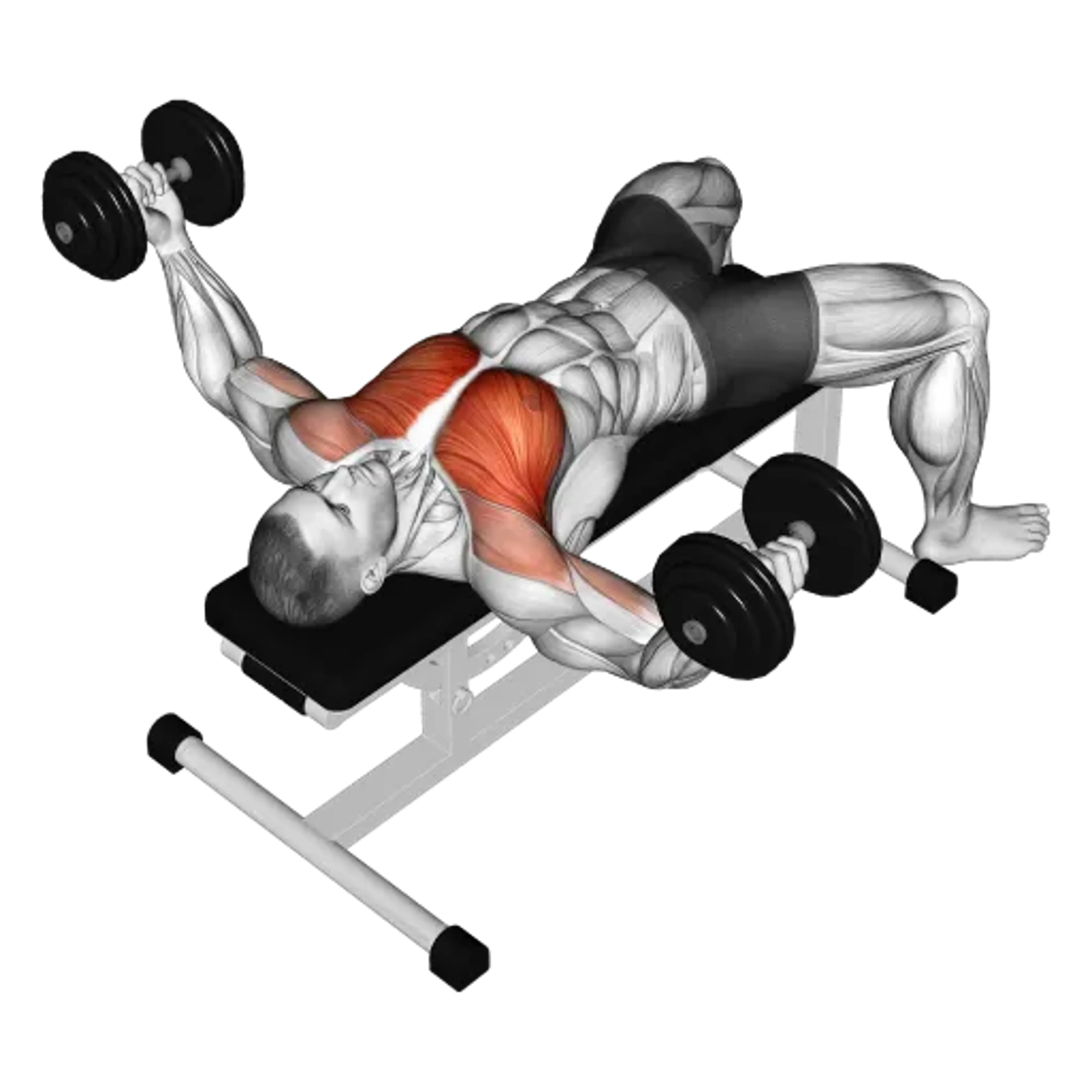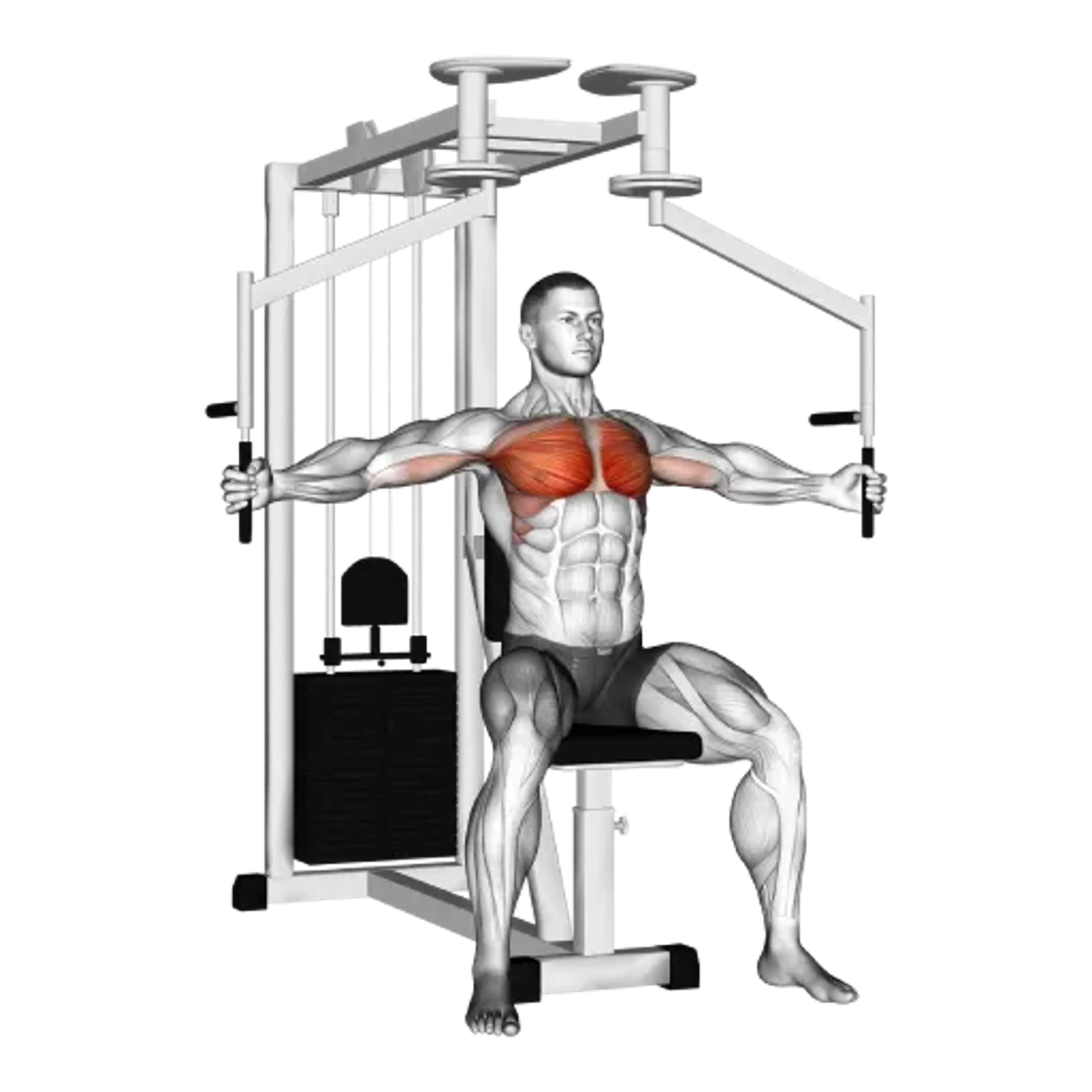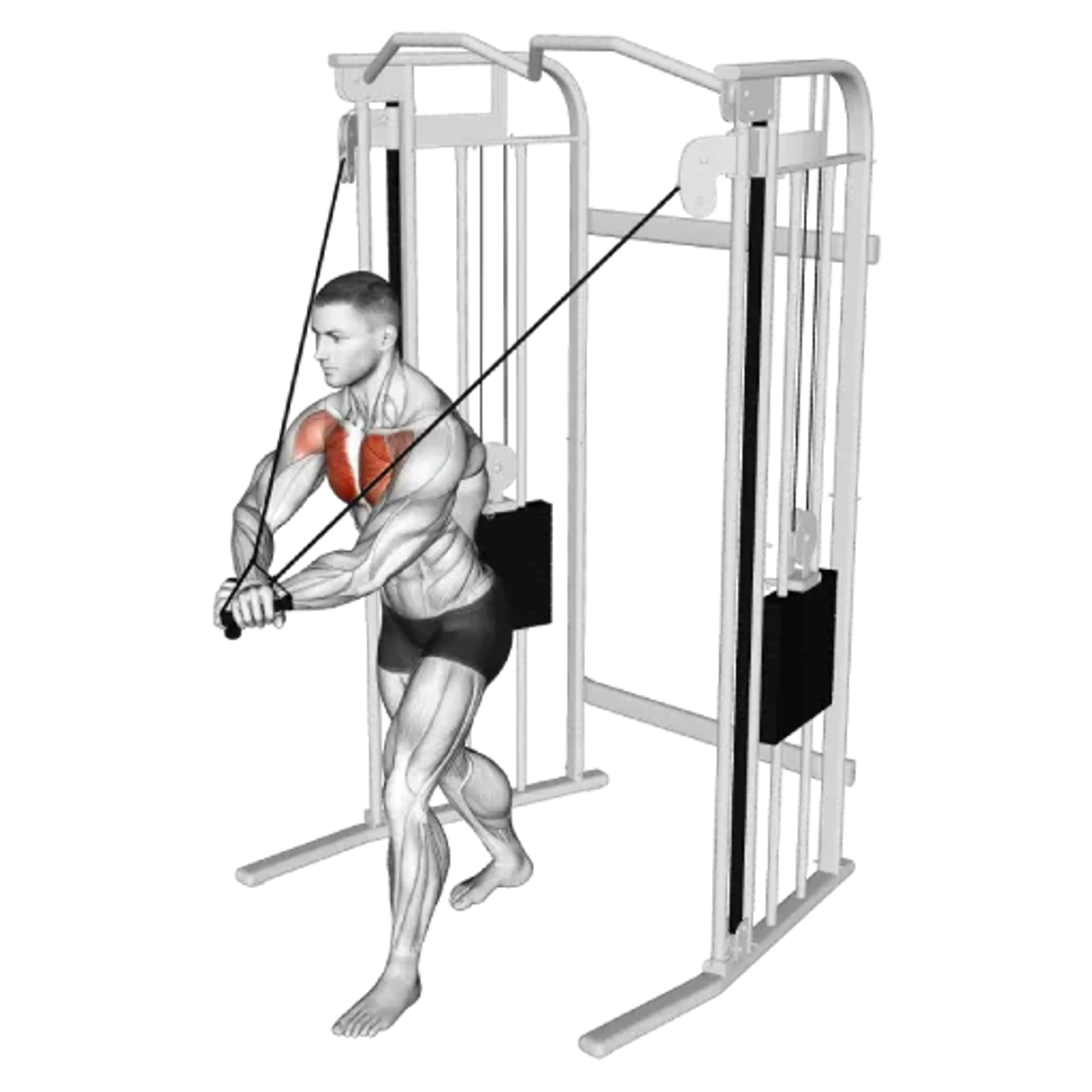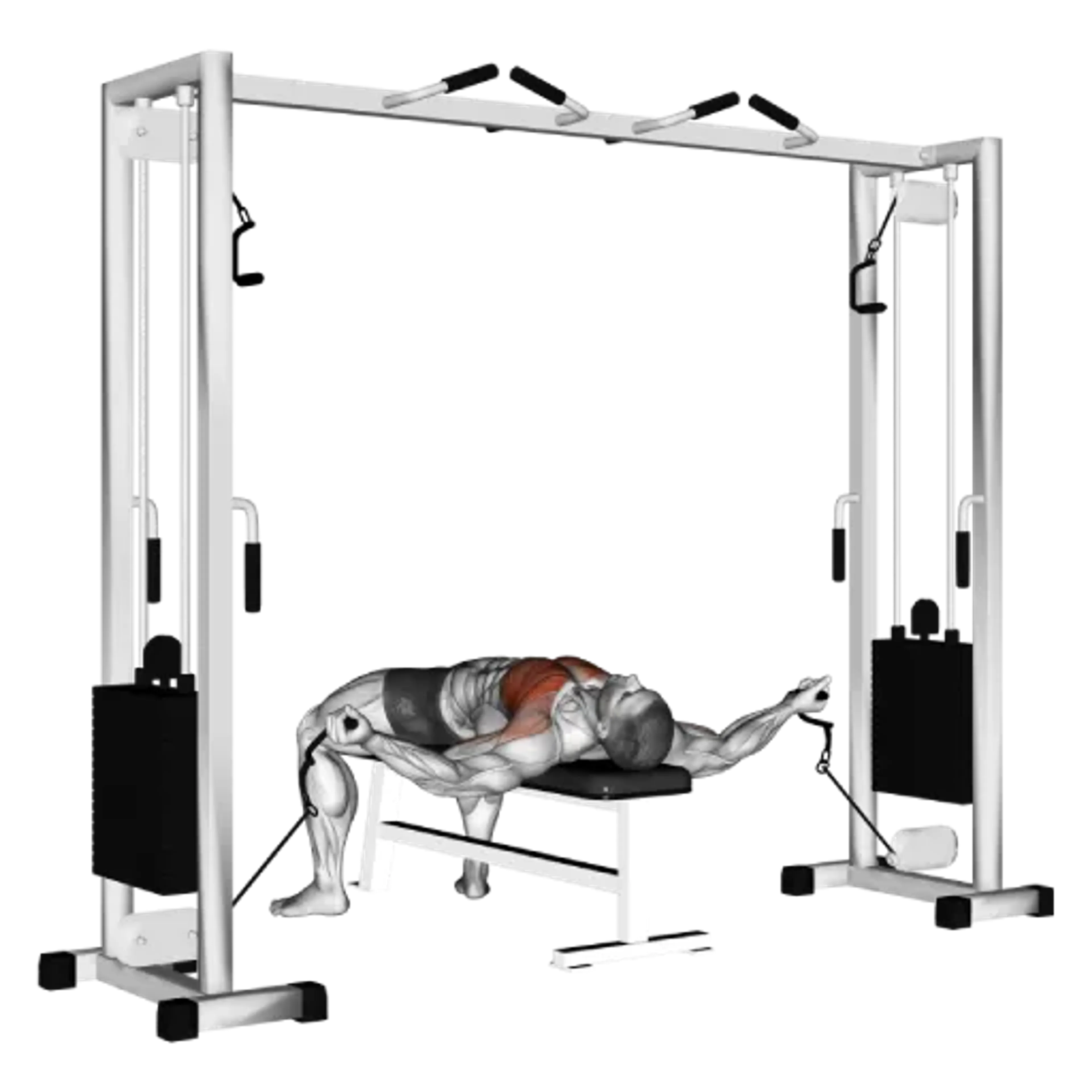Band Middle Fly

Overview
- Primary Focus:
- Chest.
- Equipment:
- Resistance bands.
- Difficulty:
- Beginner.
General Information
Band Middle Fly is an isolation exercise that primarily targets the chest, while also engaging the front shoulders. It is a beginner-level movement that focuses on building chest definition and improving muscle activation without heavy weights.
This exercise uses resistance bands, which provide variable tension - meaning the resistance increases as you stretch the band further. This allows for smooth, joint-friendly motion and is especially useful for home workouts or as a warm-up before heavier pressing exercises.
Because it’s performed at shoulder height, Band Middle Fly focuses on the middle portion of the chest, helping to create fuller pectoral development. It’s often used in bodybuilding routines for shaping the chest or in rehabilitation settings to maintain strength without excessive load.
Muscles Worked
- Pectoralis Major
- Primary
- Deltoid
- High
- Biceps Brachii
- Low
- Rectus Abdominis
- Low
- Serratus Anterior
- Low
Instructions
- Anchor a resistance band at chest height on a sturdy surface such as a door anchor, pole, or rack.
- Stand facing away from the anchor point, holding one end of the band in each hand with arms extended out to the sides.
- Step forward slightly to create tension in the band, and keep a slight bend in your elbows.
- Pull your hands together in front of your chest in a wide arc, squeezing your chest at the end.
- Slowly return your arms to the starting position under control.
- Repeat for the desired number of repetitions.
Common Mistakes
Injuries
Band Middle Fly is a low risk exercise when performed with proper technique. The resistance bands provide a smooth, controlled range of motion, reducing strain on the joints compared to free weights.
Possible issues may occur if the band is anchored incorrectly and snaps back, so always ensure it’s secured to a sturdy point before starting. Using overly strong resistance bands can also lead to poor form or excessive shoulder strain.
To avoid injury, maintain a slight bend in the elbows throughout the movement, avoid jerking the bands, and keep the motion controlled both forward and backward.
Alternative Exercises

Frequently Asked Questions
- Q: Can I do this exercise with one arm at a time?
Yes, single-arm variations can help improve core stability and fix strength imbalances.
- Q: Is this exercise good for a warm-up?
Yes, it’s a great activation movement before heavier chest exercises.
- Q: Do I need a specific type of resistance band?
Flat or tube bands with handles both work - just choose one that provides moderate, controllable resistance.
Overview
- Primary Focus:
- Chest.
- Equipment:
- Resistance bands.
- Difficulty:
- Beginner.




